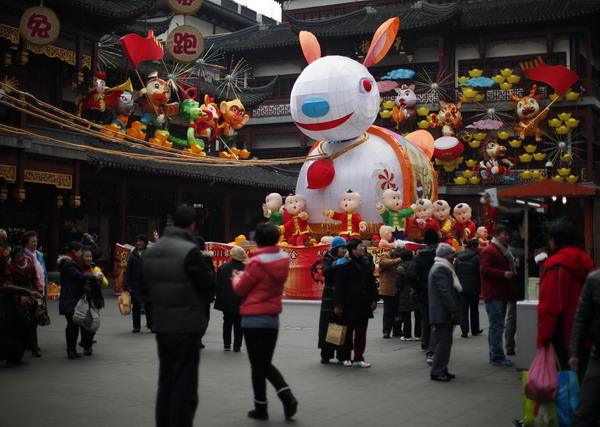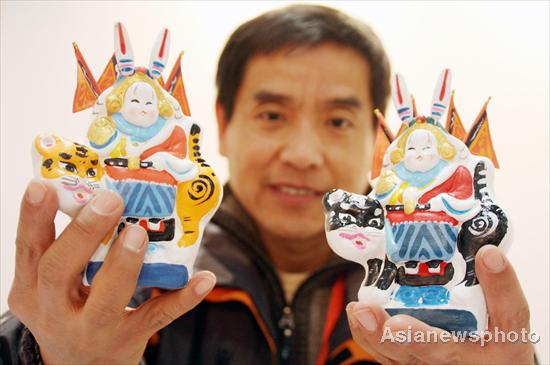Society
Chinese cultural interpretation of rabbit
By Wang Qingyun (chinadaily.com.cn)
Updated: 2011-01-26 16:35
 |
Large Medium Small |
|
 A giant rabbit lantern is seen among other Chinese New Year decorations at the Yuyuan Garden commercial area, downtown Shanghai Jan 26, 2011. [Photo/Agencies] |
In 2011, the Chinese New Year starts on Feb 3, which, according to the Chinese lunar calendar, is the first day of the first month. This year's Chinese New Year is the Year of the Rabbit. Rabbit is the fourth of the 12 Chinese Zodiac parts, in the sequence of Rat, Ox, Tiger, Rabbit, Dragon, Snake, Horse, Goat, Monkey, Rooster, Dog, and Pig. As a result, the Year of the Rabbit is the fourth year in a 12-year cycle.
| ||||
The rabbit, called in Chinese the Jade Rabbit or the Moon Rabbit, is a companion of the Moon Goddess who never grows old. It makes medicine by grinding herb with a mortar and pestle. According to Beijing folklore, the rabbit came down to earth as a girl, riding on a horse, a tiger or a lion, traveled in the city, and saved many from a serious epidemic, thus Beijingers make statuettes of a rabbit wearing armor and riding a tiger in tribute. Rabbits, especially ones with white hair, are also a symbol of longevity in traditional Chinese culture. The ancient Chinese believed it was the incarnation of Alioth, the brightest star of the Triones.
 |
|
An artist shows two rabbit clay statuettes at a market in Beijing, Nov 18, 2010. [Photo/Asianewsphoto] |
Besides the divine image, Chinese people regard the rabbit as the embodiment of cleverness. There are many idioms to describe its vigilance and agility, for example:
Dong Ruo Tuo Tu: as nimble as a rabbit that has broken loose.
Wu Fei Tu Zou: time passes so fast, just like how the crow (the sun) and the rabbit (the moon) travel every day.
Shou Zhu Dai Tu: to wait by a tree which a rabbit rushed into and died, hoping to get another prey with the same good luck.
Jiao Tu San Ku: a canny rabbit always has several holes, making it hard for predators to track it down.



